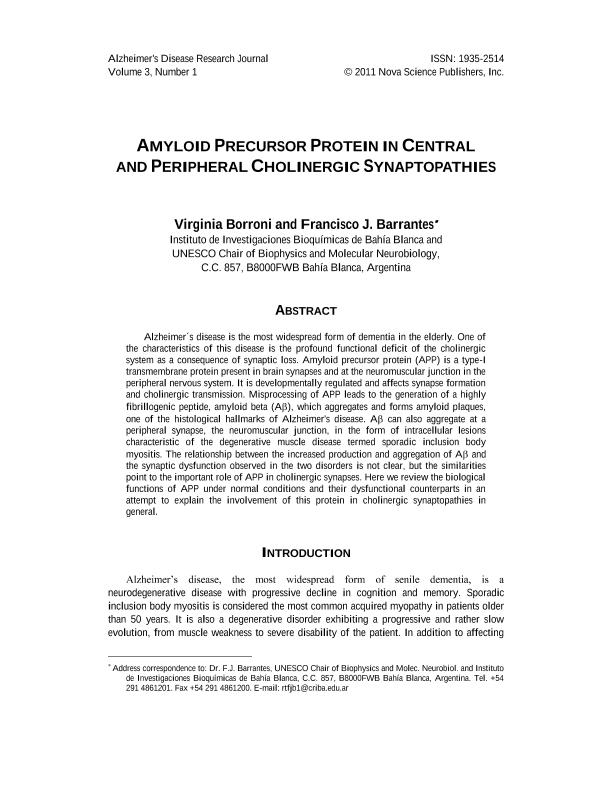Artículo
Amyloid Precursor Protein in Central and Peripheral Cholinergic Synaptopathies
Fecha de publicación:
05/2011
Editorial:
Nova Science Publishers
Revista:
Alzheimer's Disease Research Journal
ISSN:
1935-2514
Idioma:
Inglés
Tipo de recurso:
Artículo publicado
Clasificación temática:
Resumen
Alzheimer´s disease is the most widespread form of dementia in the elderly. One of the characteristics of this disease is the profound functional deficit of the cholinergic system as a consequence of synaptic loss. Amyloid precursor protein (APP) is a type-I transmembrane protein present in brain synapses and at the neuromuscular junction in the peripheral nervous system. It is developmentally regulated and affects synapse formation and cholinergic transmission. Misprocessing of APP leads to the generation of a highly fibrillogenic peptide, amyloid beta (Aβ), which aggregates and forms amyloid plaques, one of the histological hallmarks of Alzheimer's disease. Aβ can also aggregate at a peripheral synapse, the neuromuscular junction, in the form of intracellular lesions characteristic of the degenerative muscle disease termed sporadic inclusion body myositis. The relationship between the increased production and aggregation of Aβ and the synaptic dysfunction observed in the two disorders is not clear, but the similarities point to the important role of APP in cholinergic synapses. Here we review the biological functions of APP under normal conditions and their dysfunctional counterparts in an attempt to explain the involvement of this protein in cholinergic synaptopathies in general.
Archivos asociados
Licencia
Identificadores
Colecciones
Articulos(INIBIBB)
Articulos de INST.DE INVEST.BIOQUIMICAS BAHIA BLANCA (I)
Articulos de INST.DE INVEST.BIOQUIMICAS BAHIA BLANCA (I)
Citación
Borroni, Maria Virginia; Barrantes, Francisco Jose; Amyloid Precursor Protein in Central and Peripheral Cholinergic Synaptopathies; Nova Science Publishers; Alzheimer's Disease Research Journal; 3; 1; 5-2011; 11-28
Compartir




